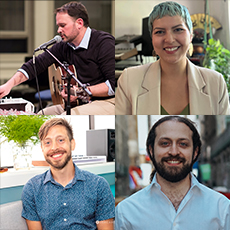Entering the Ambient
A Performative Collaborative Autoethnography of Music Therapists’ Improvising with Digital Music Technologies
DOI:
https://doi.org/10.15845/voices.v23i1.3510Palabras clave:
music therapy; improvisation; digital music technology; performative collaborative autoethnography; ambient mode of being; therapeutic soundscapeResumen
Since the 1980s, there has been an interest in the clinical benefits and challenges with the use of digital music technology in music therapy, yet there is still little information about the experiential potentialities of digital music technologies from relational, psychodynamic, and ecological frameworks. The ambient mode of being presents a heuristic approach to clinical listening when using digital music technology. Performative collaborative autoethnography was utilized by a group of four music therapy clinicians who wanted to understand their shared experience of entering the ambient while improvising using digital music technologies. Seven video excerpts from six different improvisation sessions were chosen to explore this topic and its implications for being a music therapy clinician. In keeping with the values of performative collaborative autoethnography, the results and discussion of this study are presented as a dialogue between the researchers. Each group members’ experience of entering the ambient was unique, but they shared a common reverence for how they were able to create an ambient space using digital music technology, which acted as a co-agent within their group process. The group members discuss clinical implications for this research including the benefits, challenges, and the role of gender/identity when using digital music technologies.

Descargas
Publicado
Cómo citar
Número
Sección
Licencia
Derechos de autor 2023 Michael Viega

Esta obra está bajo una licencia internacional Creative Commons Atribución 4.0.
Articles published prior to 2019 are subject to the following license, see: https://voices.no/index.php/voices/copyright

